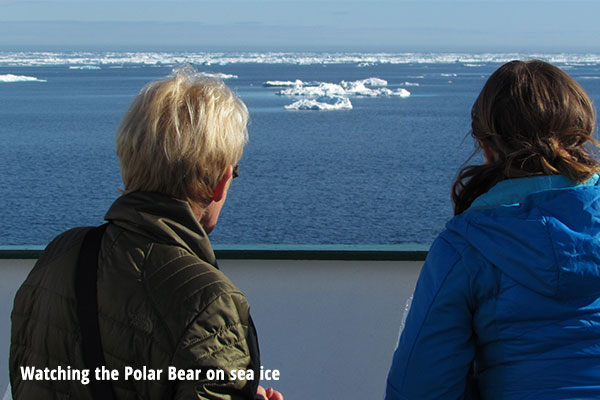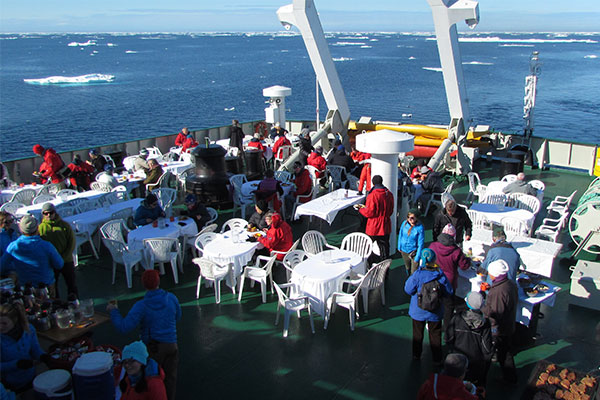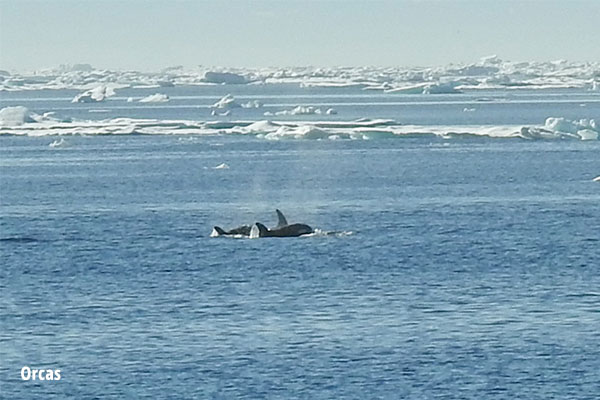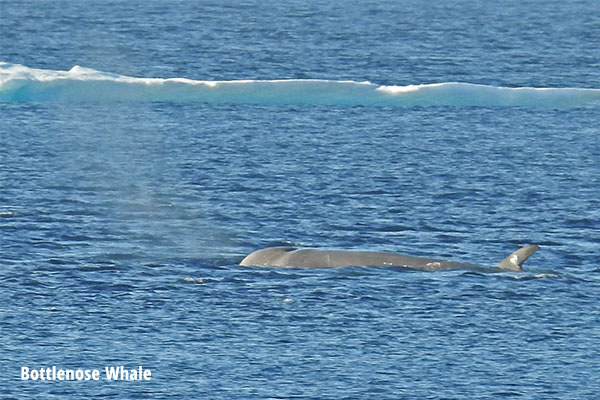As almost any account of the search for the fabled Northwest Passage will attest, an undesired build-up of sea ice can quickly derail even the best-considered plans. In the days of Franklin, Parry, Ross and so many others, such an event undoubtedly signalled oncoming hardship: in a best case scenario—an extra winter trapped in the ice; worst case—sickness and death. For us in 2015, it meant opportunity.
If the pack ice was going to dictate the itinerary on this day, there was no sense in resisting it; as such, Plan B was set: on September 2nd, we would skirt the edge of the sea ice that was keeping us away from Baffin Island, search the crystalline floes for wildlife and then take a peaceful zodiac paddle amidst the sculptures of the Davis Strait.

Such an experience is fit for a celebration, so an outdoor buffet lunch was provided on the stern deck. With sunny skies, above-zero temperatures, music and dancing, the vibe couldn’t have been better. Well, amazingly, it could and it did in short order on account of 4 Orcas moving northward on starboard side just as our celebratory lunch wound to a close. Plan B had delivered so far.

Prior to our late afternoon zodiac paddle among the sea ice, the crew had arranged for a tour of the ship’s inner mechanics. Not 20 minutes into this, however, did expedition leader Boris announce over the PA system that “it looks like our Orcas have returned on starboard side.” Back out onto the deck we poured.
Any whale with a dorsal fin is conspicuous in the Arctic, as the 3 resident whales of the northern ocean—Bowhead, Beluga, and Narwhal —each endure without one. I caught my first glimpse of a dorsal fin less than a minute after emerging from the ship’s bowels—and immediately it was clear that something was different...yet strangely familiar.

Perfect conditions and a very healthy dose of luck are required for such a dream encounter to become a reality. The luck part of the equation had certainly weaved its magic, but few realized just how perfect the conditions actually were. In one of the finest nature texts published in recent years, author Donna Naughton writes about this species in The Natural History of Canadian Mammals that "...as the whales move into the Davis Strait, they will wait at the edge of the sea ice for the pack to melt or shift" and that "they are curiously attracted to slow-moving or stationary boats...and have been known to circle around such a vessel for more than an hour." What are “they” that fit this description so closely and whose sudden appearance so enchanted a shipload of onlookers?

Page 688: Northern Bottlenose Whale.
Does ‘Arctic Plan B’ mean Bowhead or Beluga? Surely, no one would ever protest if it did, but on September 2nd, 2015, it stood for something equally breathtaking, but considerably less expected: Bottlenose.



